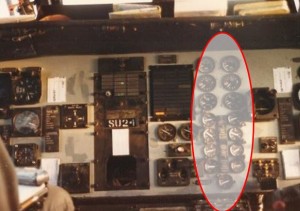While we might do careful reflection on what risks to track and manage in our information systems, it is important for us to remember that just because we’ve chosen to measure or track certain risks, that doesn’t mean that the other unmeasured and unmanaged risks have gone away. They’re still there — we’ve just made a choice to look elsewhere.
In an aircraft, a choice has been made on what systems are monitored and then what aspects of those systems are monitored. In the aircraft that I flew in the Marine Corps some years ago, a CH 53 helicopter, the systems monitored were often gearboxes, hydraulic systems, and engines. Then of each of those systems, particular attributes were monitored — temperatures and pressures in gearboxes, pressures in hydraulic systems, and turbine speeds and temperatures in engines.
Good to know
These were all good things to know. They were reasonable choices of things to be aware of. I liked knowing that the pressure in the hydraulics system was not too high and not too low. I liked knowing that the engine temperature might be getting a little high and maybe I was climbing too fast or a load might have been heavier than I had calculated. Turbine speed in the ball park of where it’s supposed to be? Good to know too.
These were all good things to monitor, but they were not the only places that things could go wrong. And you couldn’t monitor everything — otherwise you’d spend all of your time monitoring systems when your primary job was to fly. (And there wouldn’t be enough room in the cockpit to have an indicator for everything!)
Subset of risks
So a selection of things to measure and monitor is made and certain sensors and indicators are built into the aircraft. Of all of the things that can go wrong, the aircraft cockpit only gave me a subset of things to monitor. But again, this is by design because the job was to get people and stuff from Point A to Point B. The job wasn’t to attempt to identify, measure, monitor, mitigate every conceivable risk. It’s just not possible to do both.
Much like a movie director chooses what the viewer will see and not see in a movie scene, in our information systems we choose what risks we will be most aware of by adding them to our risk management plan. It is important for us to keep in mind, though, that the other risks with all of their individual and cumulative probabilities and impacts have not gone away. They’re still there — we’ve just chosen not to look at them.

